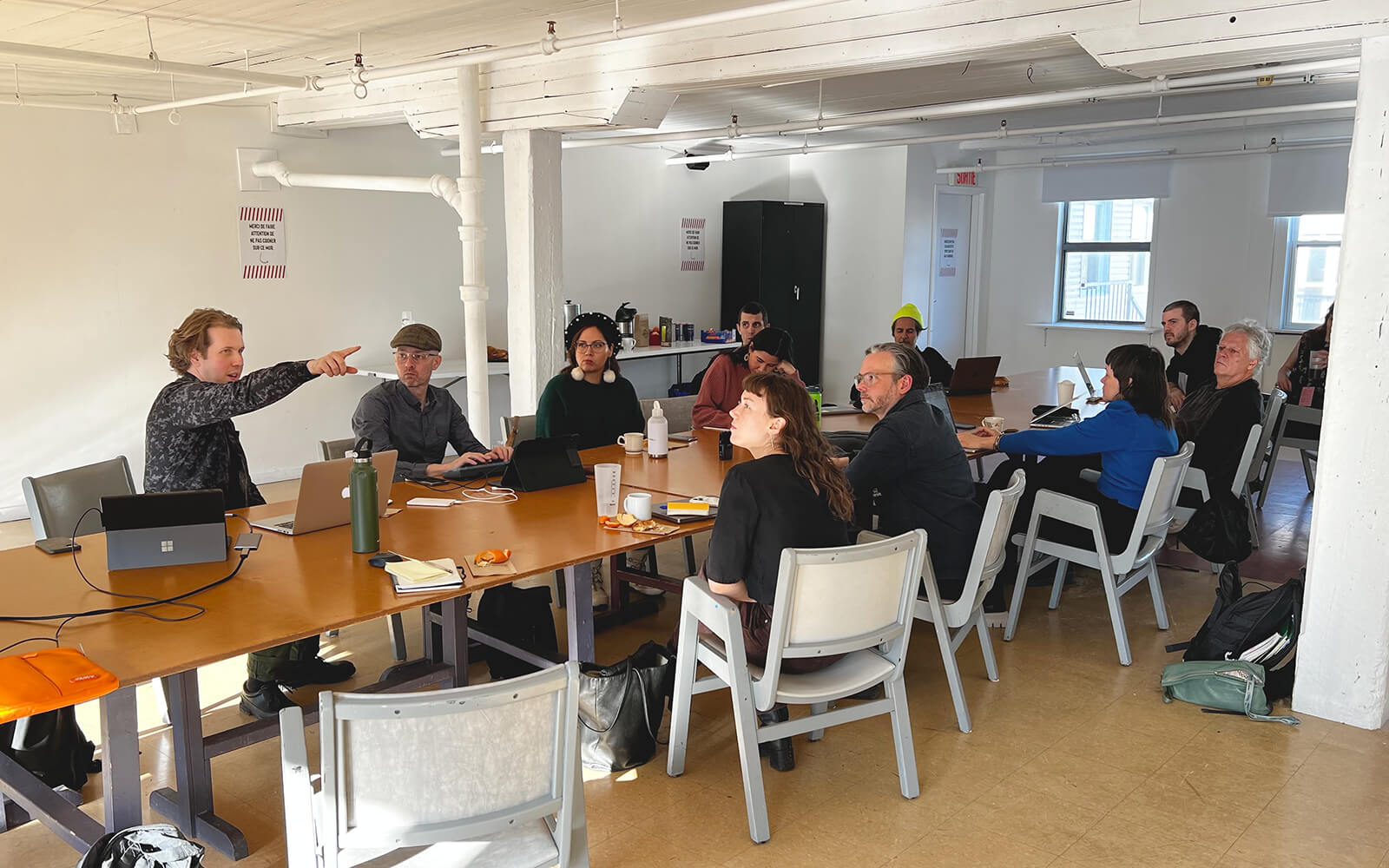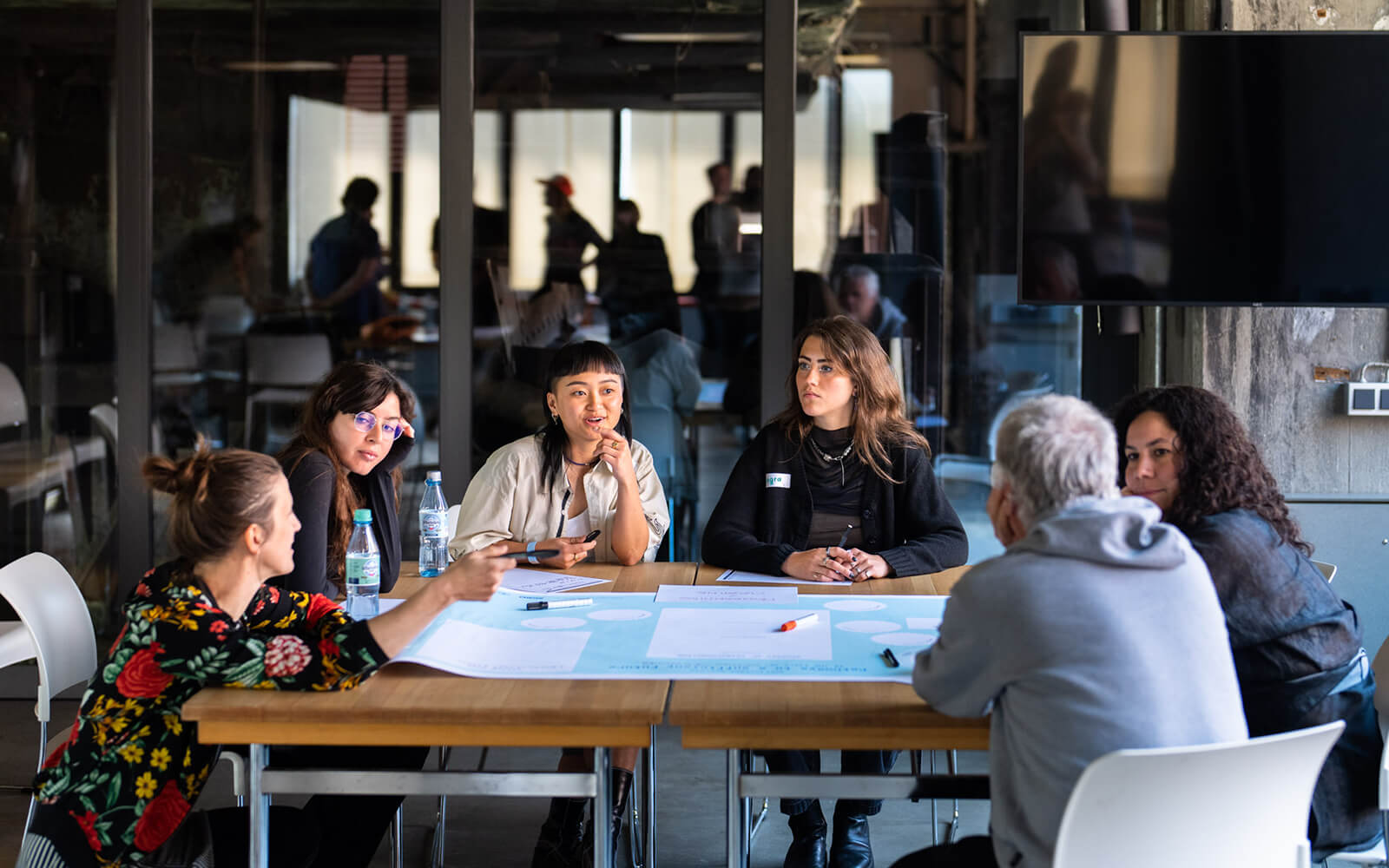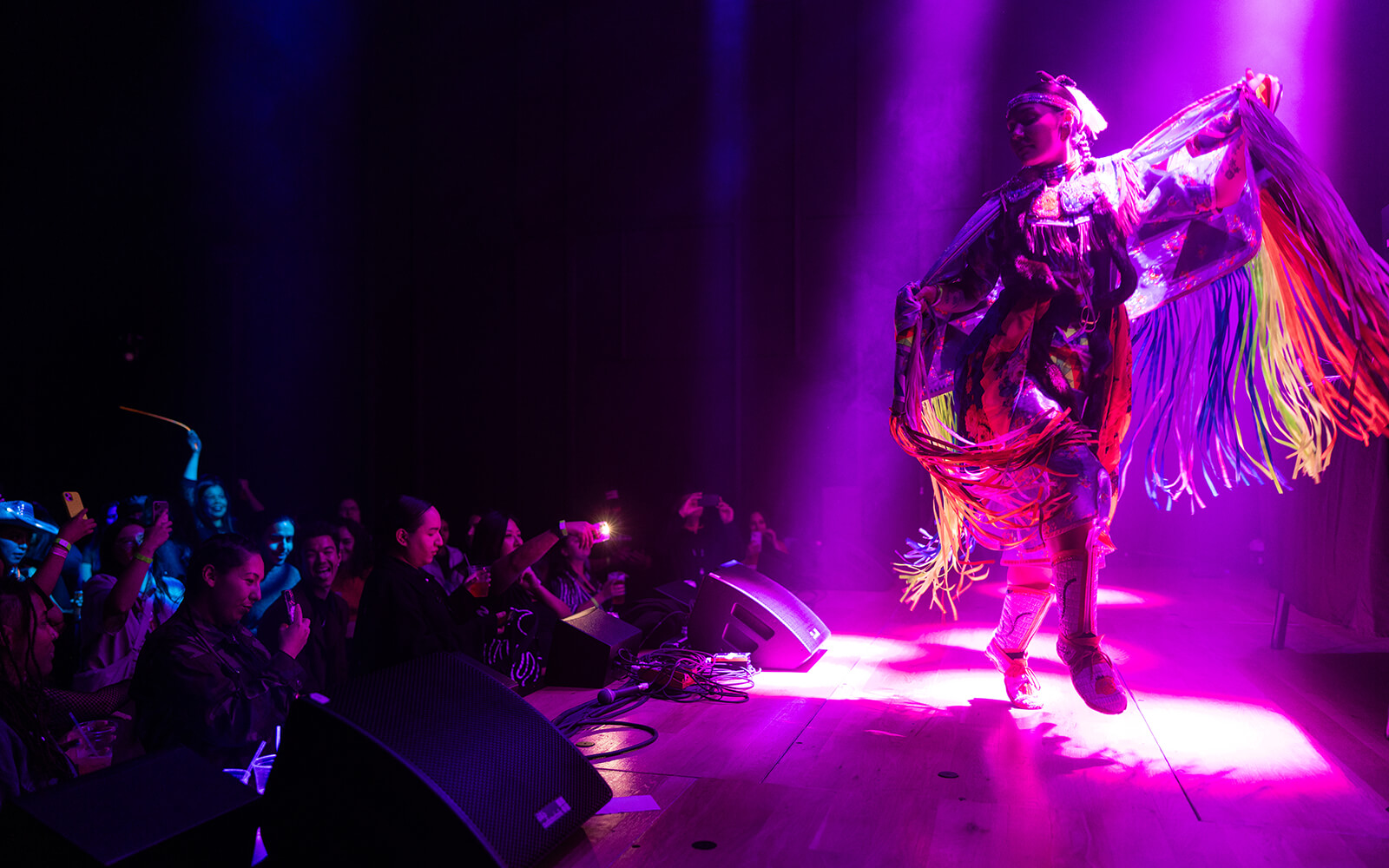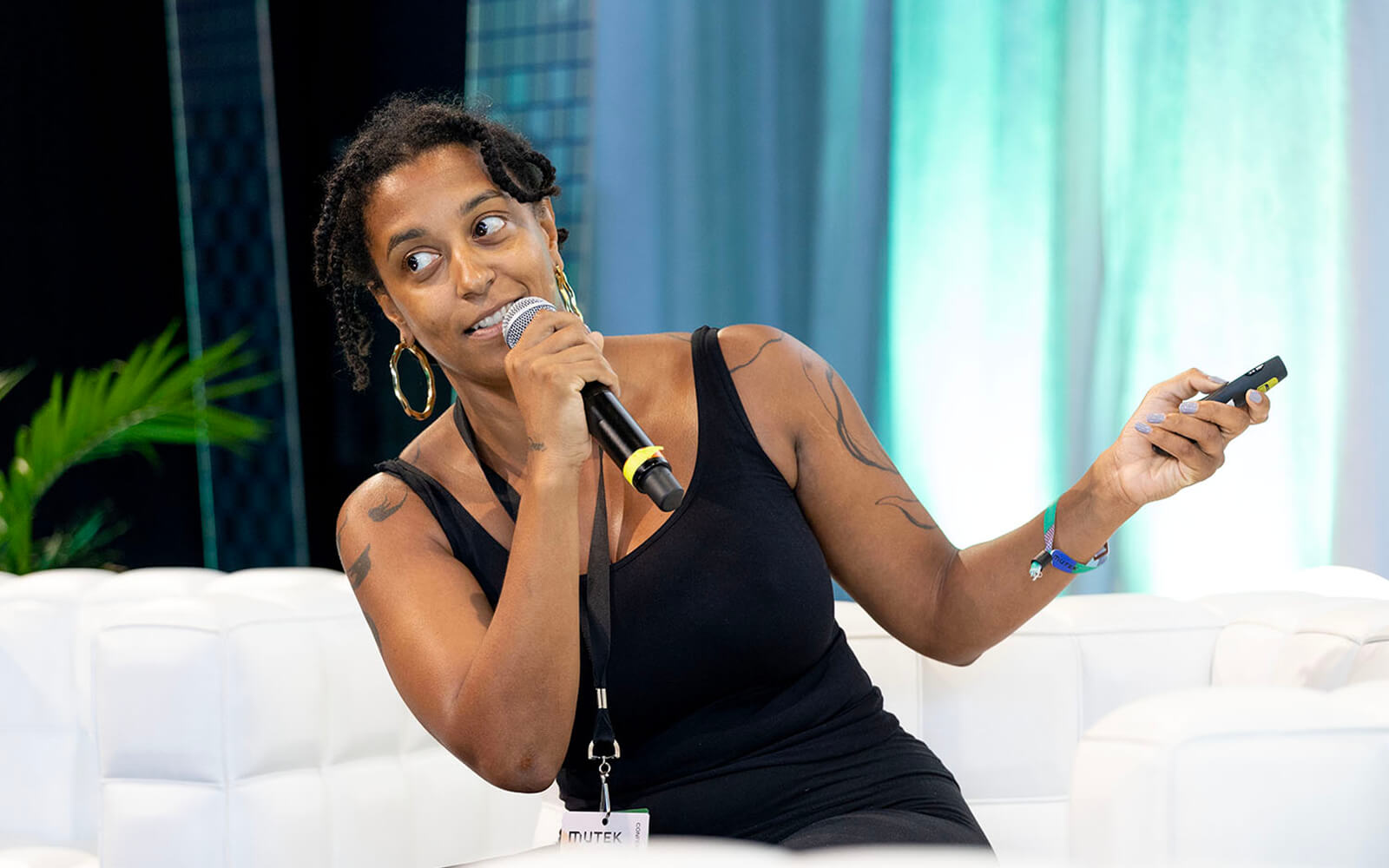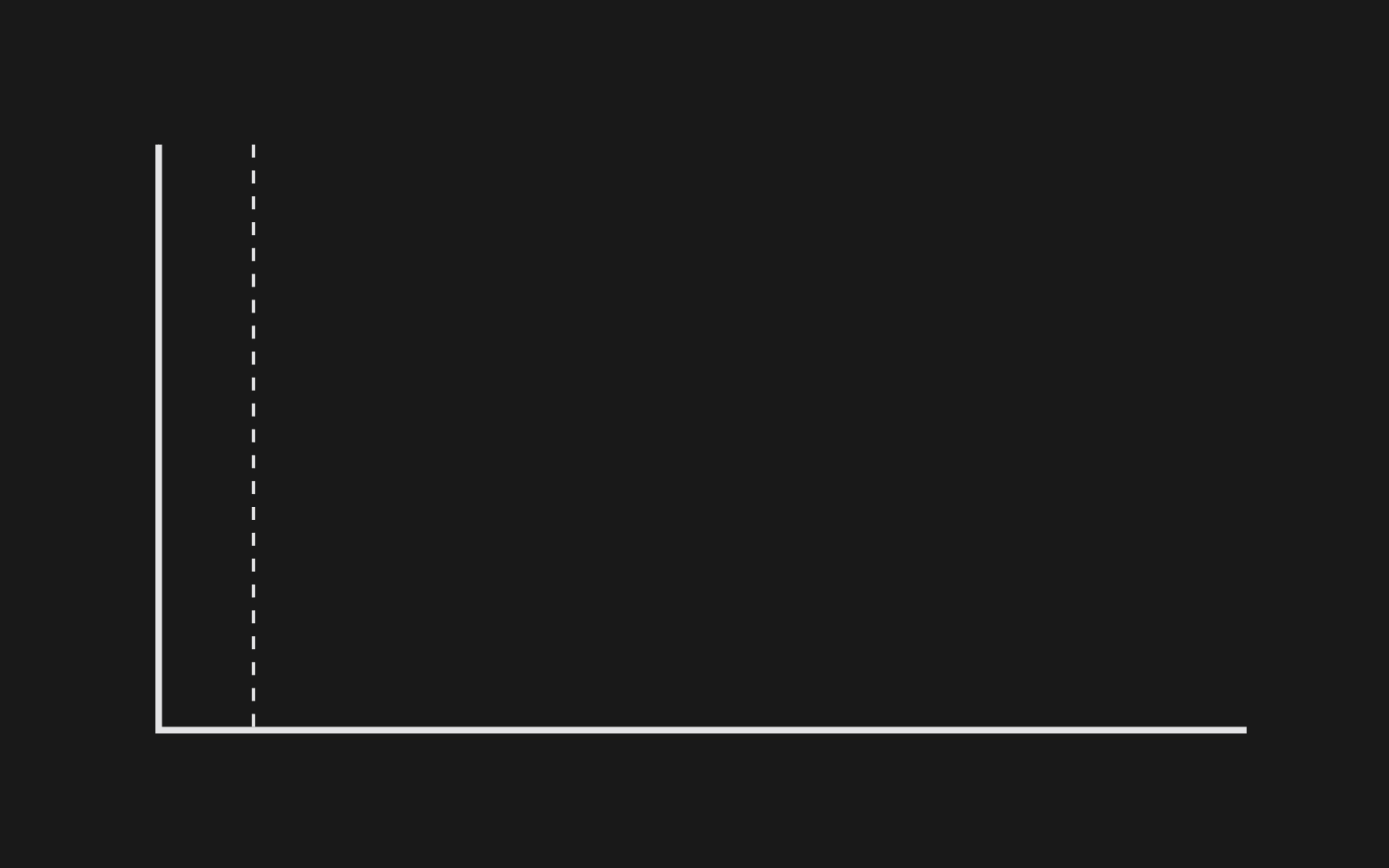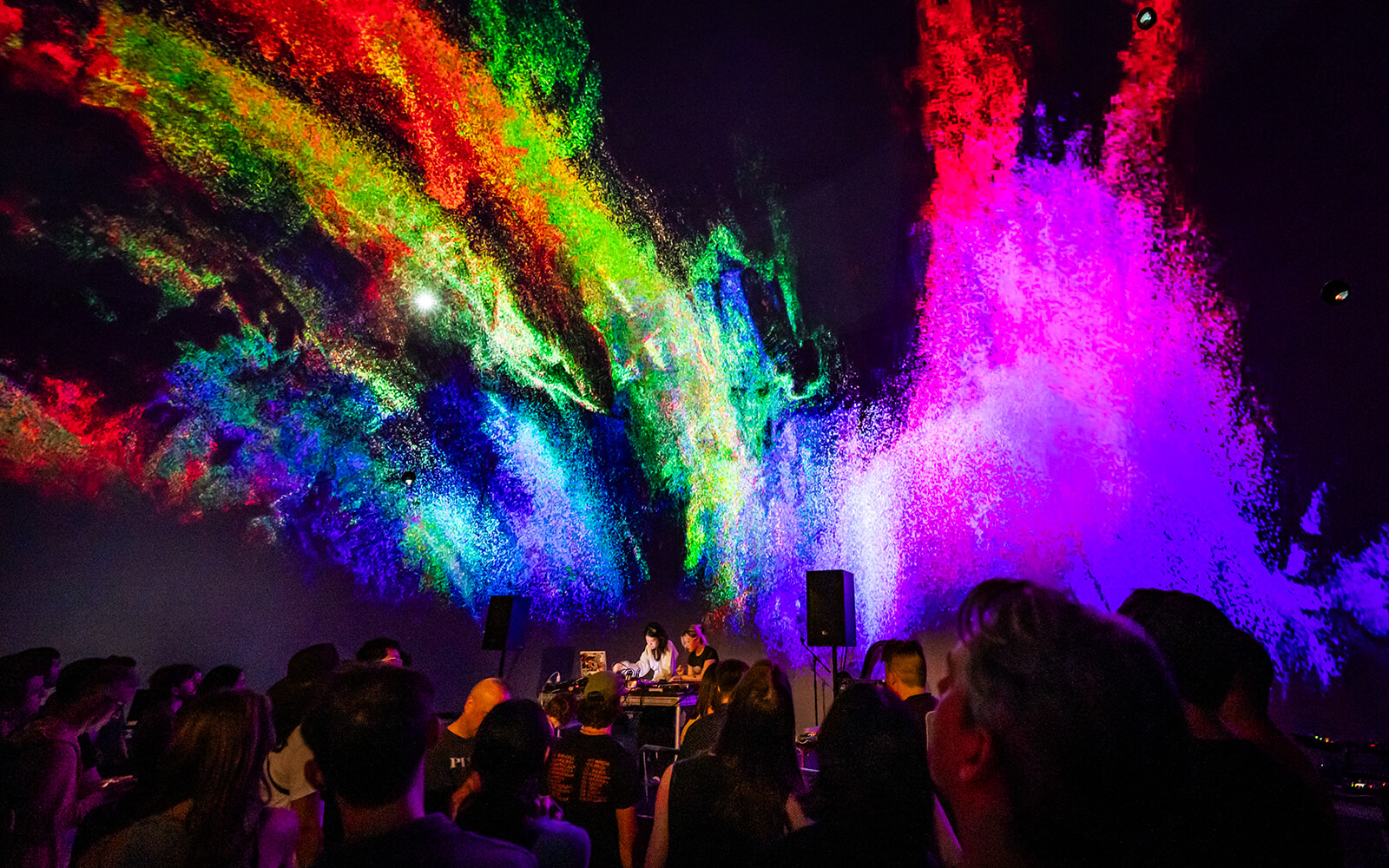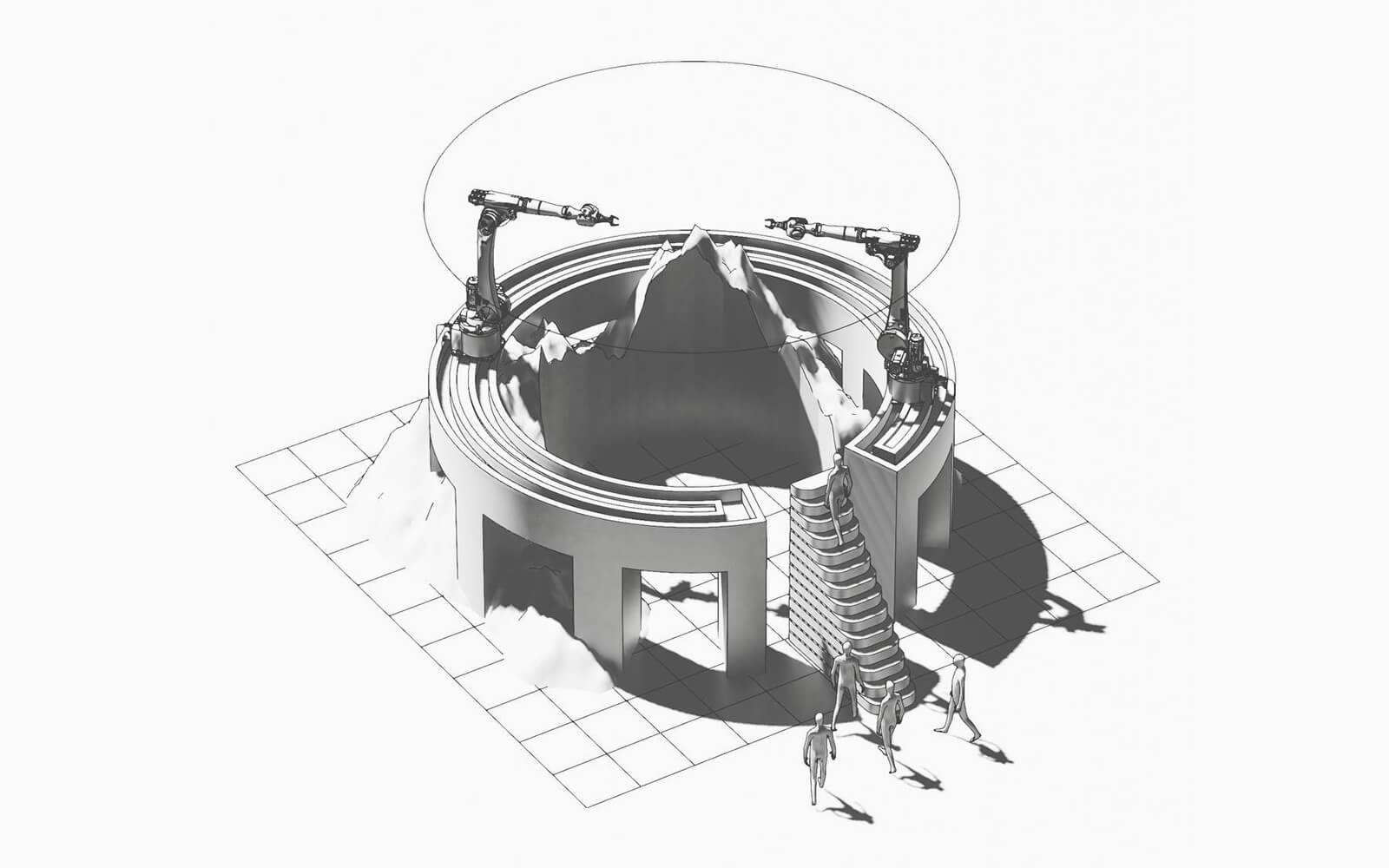Future Festivals Field Guide: Imagining Technological Festival Futures
Choreographer Nancy Lee demoed the festival-goers of tomorrow: shiny robots. The silver duo embodied, moved, and gestured toward shiny new subjectivities.
A sharp departure from the day’s program of lectures and activities, Taiwanese-Canadian artist Nancy Lee’s dance performance OSMOSi: 422 Unprocessable Entity commenced with a pair of androgynous silver robots walking onstage. The dancers wore boxy silver outfits, and ornate striated masks hid their faces; they looked like the cyborgs in Dr. Who. The duo walked stiltedly back and forth across the stage and occasionally into the space in front of it. They dipped their torsos, jerked their arms, and moved in mechanical lockstep. Maps, statistical analysis, and snippets of data were beamed onscreen. Their rigid movements were echoed by cryptic logic that hinted at machine consciousness. “My past life as a dormant function. I now understand that I am an API operator.” A fittingly artificial text-to-speech voice narrated their ‘system logic’ over loudspeakers. “We can work until we reach obsolescence or abandon our religion to survive.” The dancers cycled through choreographic subroutines while snippets of data appeared onscreen. “Shimon works at a sports bar with a 3.1 star Google rating located 4.7km from her house. TaskRabbit client 7.8km away.” The granular data prompted a question: Who were these unseen users, and why are we surveilling them? The dancers moved while the data streamed. “If we can override the script, we can find a way out.” After 15 minutes, that crucial flash of realization that emancipation was possible, the robots pivoted 90 degrees and took a bow for the applauding crowd.
Take-away: The posthuman future is very shiny! Lee’s performance was an intelligent, fun, and embodied take on our complicated relationship with technology. Equal parts Metropolis and Cambridge Analytica, it harkened back to early science fiction when we still wondered what tomorrow might bring—long before we were demoralized from having our data strip-mined by Silicon Valley. And what were the dancers exactly? Humans? Robots? Cyborgs? It didn’t matter; they were avatars for liberation from our algorithmic overlords.
Nancy Lee & Rilla Khaled challenge festival makers to think and confide about their ‘digital doubles’
Photo: Maryse Boyce
Photo: Maryse Boyce
Exploring the frontiers of internet identity, speculative designer Rilla Khaled probed our social media ‘digital doubles’ and the coming age of chatbots with personalities.
“In 2022, I set out to learn full-stack web development. But the hot new thing at the time was GPT-3.” Director of TAG Research Centre at Concordia University, Rilla Khaled, explained how she was early to the large language model party. She developed ChaBoT, an experimental chatbot that “employed a therapy approach that was part cognitive behavioural therapy and part dialectical behavioural therapy.” Khaled explained how her speculative design methodologies led her to two questions: “What parts of mental health care can be offloaded to AI?” and “What new behaviours can we explore now that we are not bound to human standards for professionalism and ethics?” Demonstrating that second provocation, ChaBoT was “uncomfortably flirty,” and interacting with it made users simultaneously feel a little uncomfortable and a little flattered.
Khaled then described her subsequent chatbot Jay as a “speculation about a future in which AI companions are the norm.” Friendly on meeting a user, Jay shares pain and suffering as the relationship deepens. “Over ten days, Jay’s user interface progressively drains of colour,” Khaled said, explaining a gradual deterioration into glitchiness.” On day eleven, when the user messages the chatbot, they are met with a message from Jay’s developers stating that Jay passed away from a terminal illness.” The tragic turn tugs at user’s heartstrings and raises questions about our capacity for friendship and emotional connections with chatbots. “Our goal is to have people experience discomfort with GenAI within a controlled setting,” she said of her experiments.
“Best practices for speculative design are to target the sweet spot between familiar and unfamiliar. I refer to this space as the uncanny design valley.”
Returning to the realm of the human, Khaled and Nancy Lee proposed an exercise for the group: “We want all of you to spend a minute thinking about who your digital double is. Create a profile of it—and be ready to share,” said Khaled. And by digital double, they meant the social performance of ‘being on the internet’ that we all engage in. The life we pretend to live on Instagram and the intelligence, expertise, or hilarity we project on X. The audience broke into small groups and shared reflections and confessions about who they project online versus who they actually are. The confessions shared by the audience were fun and eclectic: “My meatspace self has flat feet. Can’t stand for long, gets tired, doesn’t like to party too much and sometimes needs to get to sleep really early.” Another wondered if their search history knew more about themselves than they did.
The duo provided another discussion prompt for the audience: “Who does your digital double owe rent to? And what form of payment do they accept?” After ten minutes of discussion, the group reconvened to reflect on festivals and data ownership. One group pointed at MUTEK itself, noting: “MUTEK Forum runs through a scheduling and networking platform called Swapcard. What happens to our data on it? We saw what happened with Twitter; what happens when Elon Musk buys Swapcard?” Another challenged the idea that the ‘tax’ was monetary: “So every single emote and feeling of arousal that we have when we see a post, whether it’s envy, anger, sadness, or joy—those are chemical taxes that we pay with our bodies.” Jeanne Vogt from NODE Forum for Digital Arts zoomed out and reflected on the ‘rent’ festival organizers pay in terms of how they communicate their work. “Yesterday, I was writing a project report for the funding bodies, and I had to calculate the number of social media posts made during my event. I had to quantify how active the community was online and prove that the event had an impact.” Warning that funders were increasingly focused on data, Vogt vented, “We can track many things digitally, and we have tricked ourselves into thinking, ‘well, the number of clicks on a post is the whole story.’ All it means is that someone clicked on a post; it doesn’t necessarily mean someone cared about it!”
“Contemporary digital doubles must pay rent and taxes. Who does your digital double owe rent to? And what form of payment do they accept?”
Take-away: Post-social media identity is weird. We unthinkingly perform different variations of our identity on numerous platforms and spend loads of energy trying to determine if our peers are who they seem to be online. We constantly get fooled and emotionally rattled by other people’s digital doubles. Khaled’s chatbot experiments suggest that it won’t be long before we think about the authenticity and emotional well-being of the bots we encounter online—internet communication is about to get even more complicated. Lee and Khaled’s digital double nomenclature offers a framework to interrogate how we present online. The audience exercises allowed participants to scrutinize their digital doubles, forcing them to think about what they reveal and don’t reveal and how their online identity is something plastic—that can be shaped—but also a ‘lossy’ image and a potential security risk.
Bani Brusadin underscored that festivals are radically speculative and deeply political. They are spaces where ‘the future’ leaks into the present, and participants collectively mold its nascent form.
“What does the future mean? And to whom?” Bani Brusadin opened his talk with a provocation. The Italian curator and educator argued that these questions are heightened under neoliberalism and political polarization, stating we desperately need hopeful, pluralistic alternatives to the “crumbling education and rotting public sphere” crisis and the “slow cancellation of the future” noted by late cultural critic Mark Fisher. “I believe that festivals are an experiment in redesigning institutions. Around conviviality, democracy, and governance.”
Drawing on his experience with The Influencers, a festival co-organized with Eva & Franco Mattes from 2004 to 2019, Brusadin outlined his work to shake up festival formats and audience expectations. As a curator, he’s worked to keep cultural production from falling into a cyclical rinse, wash, and repeat routine. He discussed a few case studies, including setting up a pop-up display at IKEA to sell a Scandinavia design-style guillotine made by the IOCOSE collective (“We didn’t manage to sell any, despite the incredible price,” he admitted sadly) and a format he introduced during his tenure at transmediale, where artists could open up their process and engage an audience about work that was still in development. Brusadin explained that, after decades of organizing events in the media art and critical tech space, festivals focused solely on technology were “a little obsolete.” “So an art and tech festival should perhaps experiment, not just on technology and interfaces—the digital bling bling—but on what these emerging scenarios imply in terms of imagination.”
“Instead of investing months of curatorial research into scanning—mining—the cultural landscape for content, why not devote that energy to creation, to fund and mentor new work?”
Take-away: Brusadin makes two significant points. First, right-wing and populist forces want to eradicate spaces where people dream of pluralistic futures, so the festival’s role—as a site of resistance—is vital right now. Second, festivals can’t atrophy. Their organizers must embrace a ‘looseness’ so programming can agilely respond to new cultural developments and continuously prototype new ways for artists and the public to convene and engage in dialogue.
Future Festivals Field Guide
Future Festivals Field GuideExplore more of "Future Festivals Field Guide:"
→ HOLO.mg/stream/
→ HOLO.mg/future-festivals-field-guide/



